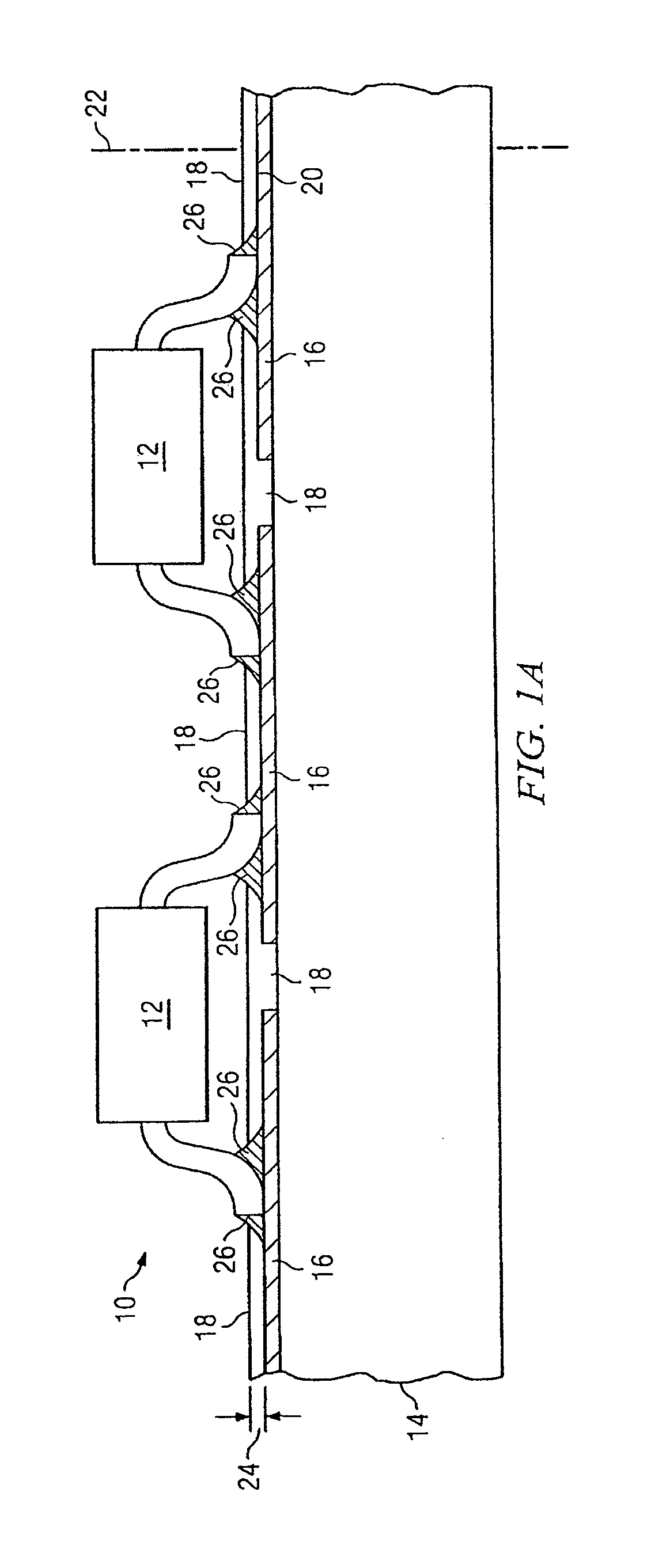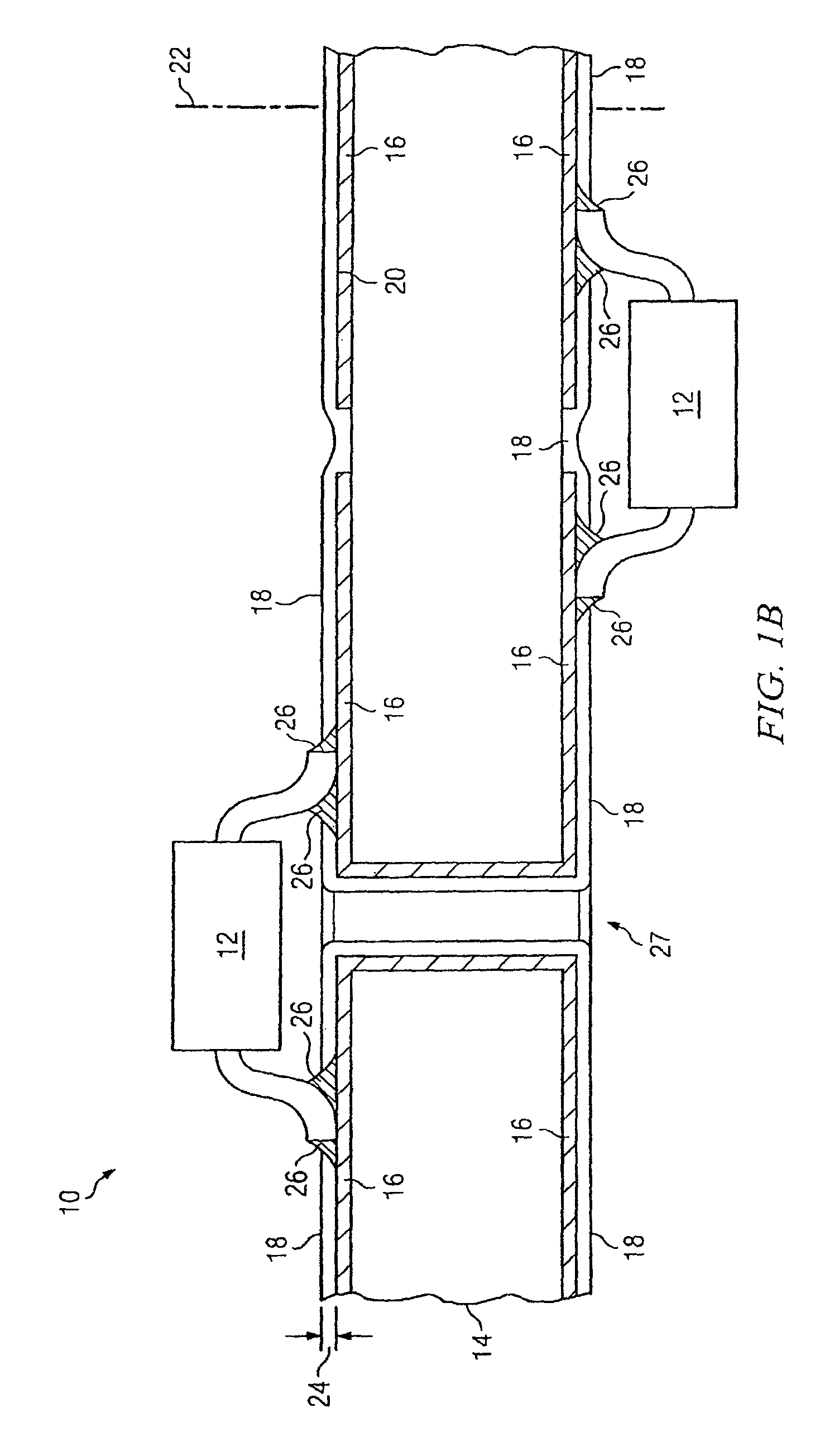Apparatus with a wire bond and method of forming the same
a technology of pcb and wire bonding, which is applied in the direction of manufacturing tools, soldering apparatus, fixed capacitors, etc., can solve the problems of reducing the lifetime of such joints, reducing the service life of such joints, so as to prevent the oxidation of the conductive tracks on the pcb, preventing or hindering the soldering of an electrical component, and preventing the oxidation of the conductive tracks
- Summary
- Abstract
- Description
- Claims
- Application Information
AI Technical Summary
Benefits of technology
Problems solved by technology
Method used
Image
Examples
Embodiment Construction
[0057]FIG. 1A illustrates a printed circuit board (PCB) 10, according to certain embodiments. PCB 10 may mechanically support and / or electrically connect one or more electrical components 12 associated with an electrical circuit. PCB 10 may comprise a substrate 14, one or more conductive tracks 16, a coating 18, and one or more electrical components 12.
[0058]Substrate 14 in PCB 10 may comprise one or more boards that mechanically support elements of a circuit. For example, conductive tracks 16 and / or electrical components 12 may be affixed to at least one surface of substrate 14. Substrate 14 may comprise any suitable insulating material that prevents substrate 14 from shorting the circuit of PCB 10. In some embodiments, substrate 14 in PCB 10 comprises an epoxy laminate material, a synthetic resin bonded paper, an epoxy resin bonded glass fabric (ERBGH), a composite epoxy material (CEM), a phenolic cotton paper, and / or any other suitable type and / or combination of insulating materi...
PUM
 Login to View More
Login to View More Abstract
Description
Claims
Application Information
 Login to View More
Login to View More - R&D
- Intellectual Property
- Life Sciences
- Materials
- Tech Scout
- Unparalleled Data Quality
- Higher Quality Content
- 60% Fewer Hallucinations
Browse by: Latest US Patents, China's latest patents, Technical Efficacy Thesaurus, Application Domain, Technology Topic, Popular Technical Reports.
© 2025 PatSnap. All rights reserved.Legal|Privacy policy|Modern Slavery Act Transparency Statement|Sitemap|About US| Contact US: help@patsnap.com



